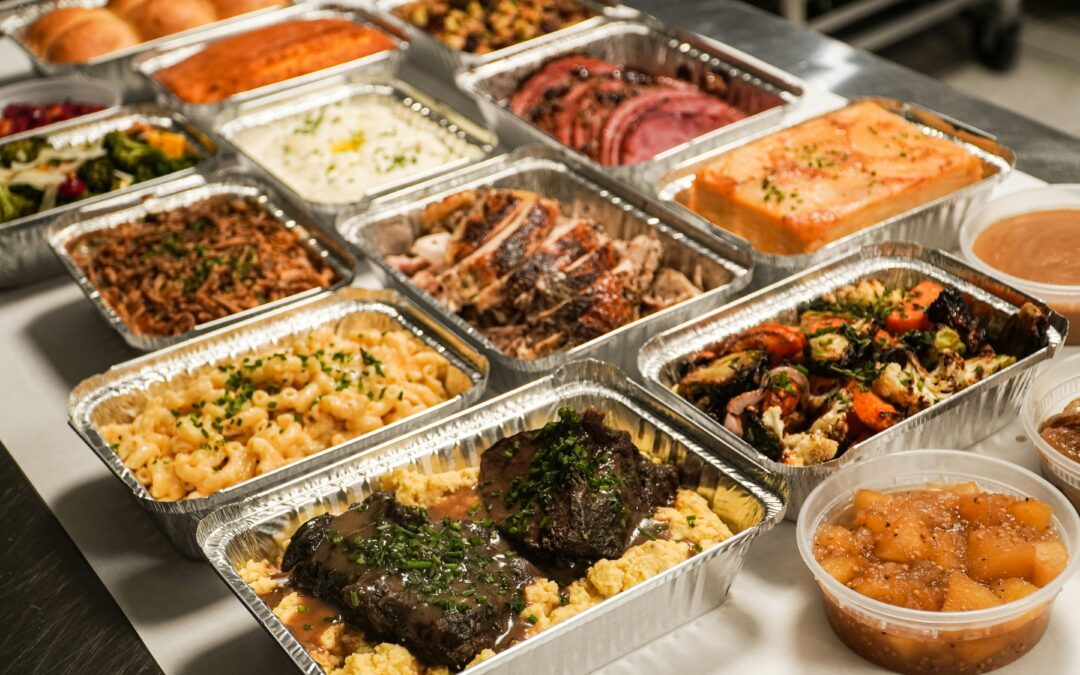The holiday season is a time for joy, celebration, and, of course, food. But amid all the cooking, feasting, and gathering around the table, one thing often gets overlooked: food waste. From leftovers piled high to the fruits and vegetables that spoil before you even get a chance to use them, food waste is a major environmental issue—and it’s a problem that only intensifies during the holidays.
But here’s the good news: making a few simple, sustainable changes to how we shop, store, and prepare food can help us drastically reduce waste, save money, and even fight climate change. This holiday season, Washington State is encouraging residents to be mindful of how they Use Food Well through a campaign aimed at tackling food waste head-on. Let’s dive into how you can make food choices that are better for your wallet and the planet!
Why Should We Care About Food Waste?
It’s easy to think of food waste as a small issue, but the truth is, it has a huge impact on the environment. When food rots in landfills, it releases methane—an incredibly potent greenhouse gas that traps 80 times more heat in the atmosphere than carbon dioxide in the short term. In Washington, about 16% of methane emissions come from organic waste in landfills. The more food we waste, the more we contribute to global warming.
And it’s not just the environment that suffers; it’s our wallets too. The average U.S. family tosses out roughly $3,000 worth of food each year. But don’t worry, with a few mindful strategies, we can keep those costs—and environmental costs—down.
Tips for Cutting Food Waste (and Saving Money!)
Reducing food waste doesn’t require a complete overhaul of your holiday traditions. In fact, with just a few simple steps, you can make a big difference this season. Here’s how:
1. Plan Your Meals (and Stick to the List!)
Over-buying at the grocery store is one of the main reasons foods ends up in the trash. So, this year, take a little extra time to plan your meals. Think about the number of guests you’re expecting and how much food you’ll actually need. Making a shopping list based on this plan will help you avoid impulse buys, which often lead to forgotten ingredients that spoil.
2. Get Creative with Leftovers
Leftovers are a holiday tradition, but they don’t have to be boring. In fact, many chefs (including celebrity chef Joel Gamoran, who’s partnering with the Use Food Well campaign) suggest turning those leftovers into entirely new dishes. Make a soup from leftover turkey, create a casserole from extra mashed potatoes, or whip up a salad from unused veggies. If you’re stumped, the campaign’s website has a treasure trove of creative leftover recipes to inspire you! You can also check out the blog from Clark County Green Neighbors on Scrappy Cooking!
3. Proper Storage = Less Waste
Proper food storage is key to keeping ingredients fresh and minimizing waste. Make sure you store raw meats separately from other foods, and always keep fruits and veggies away from each other. Use airtight containers for dry goods like flour and sugar to preserve their freshness. Even simple tweaks like keeping your fridge at the right temperature (below 40°F) can extend the life of your food and help prevent spoilage.
4. Compost What You Can’t Eat
Even with the best of intentions, some food scraps are inevitable. Instead of sending them to the landfill, why not compost them? Composting reduces methane emissions and creates nutrient-rich soil that can be used for gardening. Many communities, including those in Washington, offer resources and pickup services for composting, so it’s easier than ever to turn your food scraps into something valuable. If you do not have access to curbside composting services, you can drop your food waste off at a We Compost Community Hub for free! There are several locations throughout Clark County.
5. Share the Love (and the Food!)
Hosting a big holiday meal? Don’t let those leftovers go to waste—share them with family, friends, or even neighbors. You can also donate unopened, non-perishable items to local food banks. What’s better than reducing food waste? Helping others in need while doing it.
Partnering to Fight Food Waste
Washington State is taking food waste seriously—and they’re not doing it alone. The Department of Ecology has partnered with local grocery chains like Safeway and Albertsons to spread the Use Food Well message in stores, offering easy tips right in the aisles. The state is also working alongside the Pacific Coast Food Waste Commitment, a collective of U.S. states, cities, and British Columbia, with a bold goal: cutting food waste in half by 2030. It’s a mission that involves everyone, from farmers and chefs to grocery store chains and everyday consumers like you!
This holiday season, the Use Food Well campaign is teaming up with celebrity chef Joel Gamoran to provide fun, engaging recipes that help you make the most out of leftovers and save money in the process. Chef Joel’s holiday-inspired recipes can be found on the campaign’s website, giving you the tools to turn yesterday’s dinner into today’s new favorite meal.
Locally, Clark County Green Neighbors takes food waste seriously! Check out their posts about food waste and developing new habits to create low waste holiday meals. They also have a great five-episode food waste podcast series: Food Waste: POD-VENTION.
Small Changes, Big Impact
The holidays are a time of abundance, but that doesn’t mean we should waste food or resources. By planning meals, storing food properly, and reimagining leftovers, we can reduce waste and make a real difference in the fight against climate change. And it’s not just the environment that benefits—reducing food waste means saving money, too!
So, this holiday season, let’s embrace the spirit of sustainability. Take small steps, like those outlined in the “Use Food Well” campaign, and make food choices that are both good for the planet and your wallet. For more tips, recipes, and resources, check out https://www.usefoodwell.org and start making smarter, more sustainable food choices today. Happy holidays—and happy food-saving! 🌱🎉
Photo by Ana Maltez on Unsplash

